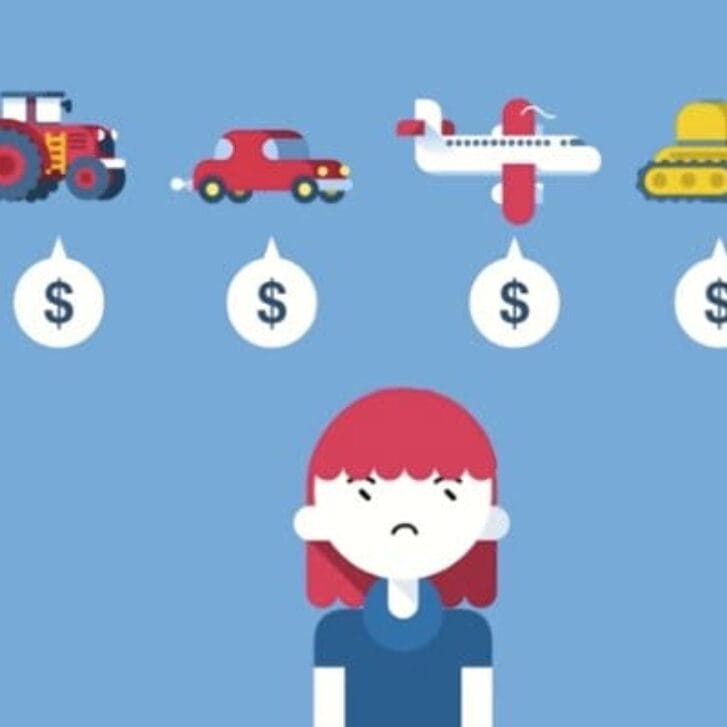A few weeks ago, Wharton invited to its Philadelphia campus leaders from other business schools like Columbia, Harvard, Kellogg, Michigan and Stanford; online education providers such as Coursera, edX and FutureLearn; and corporations including AT&T, JP Morgan, Merck and SAP; to discuss the future of online business education. It was a fantastic group who engaged in 2 days of stimulating conversation about one of the most important trends in education.
You may well be a bit cynical following the breathy 2012 “year of the MOOC” hype. But really big things are happening, and happening at warp speed. Indeed, getting together to talk online education is the anti-Groundhog Day. Last year’s thinking is close to irrelevant today. The terrain is changing so fast that not only are there new opportunities to consider every month; my whole orientation to what online means is constantly in flux.
Here are 5 takeaways from our state of the art conference:
1. When you think online, think lifelong learning
A colleague of mine likes to draw a distinction between degrees and professional development/executive training programs. PD/ET is “just in time”: people who are changing jobs, or want to keep up in their current jobs, or want to advance their careers all need the same thing: cutting edge skills that will have immediate impact. This means short, focused programs. Degrees are more “just in case”: during typically much longer courses of study you will learn things that you might not use again for years, but will be invaluable when you need them.
This is of course selling degrees short. They provide the intellectual architecture that helps you make sense of everything around you and helps you develop broad based skills like critical thinking, communication and leadership that will serve you well throughout your careers.
But my colleague’s bigger point is right. Everyone who wants to succeed today needs both the foundation of the best degree(s) and the constant updating of best continuous professional development. Online may well be suited to both, but it is perfect for focused, short programs.
This means 2 things for business schools. First, our lifetime value proposition to our alumni includes giving them the opportunity to continually update and expand their skills, and with online, going “back to school” is far easier than ever before. Second, people who didn’t go to a business school during their degree years can nonetheless benefit from them later, through non-degree programs.
Call both “lifelong learning,” and you have a core piece of the future of education.
2. From b2c to b2b
The early days of online higher education were dominated by “free MOOCs.” The big learning platforms still give free access to amazing content from most of the world’s great universities. In the past 18 months, Coursera and edX have made it possible for learners to get recognition for online courses they complete at a tiny fraction of the cost of traditional higher education. From a business model standpoint, the world of MOOCs certainly began with a clear b2c mindset, with (millions of) single end users.
In the past year or so, however, thinking about b2b has mushroomed. The first “b” remains the same—universities and faculty who create content, and the online platforms who distribute it. The second “b,” however, comes in 2 flavors.
The first b2b flavor is other universities and colleges. In this model, a university can choose to count online courses from somewhere else (e.g. Wharton specializations on Coursera) for credit towards their degrees—potentially by creating their own learning communities around the online content and providing their own facilitators to improve learning. In some ways, this is multimedia textbooks on steroids.
The second b2b model is indeed business—corporations who want access to online material to help develop the skills of their employees. Again, corporations can take online content as is, or add more value through building their own learning communities and using their own facilitators (for example, a manager and her team). For those familiar with traditional face-to-face executive education programs, this resembles “custom programs” where a business school works directly with a corporate client, only this time online. This is why it made sense for us at Wharton to merge our burgeoning online education programs into our much larger executive education organization.
3. Non-degree credentials are booming
At our conference, there was lots of talk about Coursera “specializations,” a grouped series of online classes for which a learner can receive a certificate of completion. I learned that such specializations have risen with a bullet to the top of the credentials recorded in LinkedIn profiles.
But then the head of edX scooped Coursera by announcing a dramatic expansion of “MicroMasters.” These comprise a series of online classes that can be used by learners in the same way as Coursera specializations. But they have a second pathway: as something like “advanced placement” towards master’s degrees at universities like MIT and Michigan. In this symbiotic relationship, the universities can use performance in MicroMasters as one input into their admissions processes. If admitted, students can get some credit towards their new degrees for the work they did in MicroMasters.
And that isn’t all. There are many successful “SPOCs” (small private online courses) out there, offering specialized training programs with deeper dives into content and higher touch by university faculty than MOOCs.
No doubt by the next time I put together my thoughts on online education, there will be at least one new online credential, generated bottom-up by the marketplace for skill acquisition rather than top-down by the accreditation bodies that warrant degrees.
4. Low entry barriers, lots of partnerships, no exclusivity
In terms of the industrial organization of online education, two things are striking. First, almost anyone can play; you certainly don’t need to be a university. Organizations adding value range from pure skills companies like Lynda.com and General Assembly, to consulting companies such as McKinsey Academy and Deloitte Learning Academy, to business schools like Wharton and HBS. For us in universities, this competition keeps us on our toes. We need both to focus on our core competencies and sources of competitive advantage and to keep up with the rapid pace of innovation among non-university players.
One natural complement of low entry barriers is that there are lots of partnerships among the different kinds of providers of online training and education, and almost all of them are non-exclusive. At Wharton, for example, we work closely with both edX and Coursera. We also partner with different consulting firms on executive training programs, both face-to-face and online.
5. The learner is the winner
Put these features together and it is no wonder the world of online education and training is so dynamic. One of our corporate participants in the Wharton Online conference summed it up perfectly: “the learner is the winner.” And I think we are still in the early days when it comes to online business education. The future is exciting, and the opportunities for learners will only continue to grow.
For more information about Wharton’s online offerings, visit: https://online.wharton.upenn.edu/.
Editor’s Note: This post was originally published on Dean Geoffrey Garrett’s LinkedIn page, where he was named an “influencer” for his insights in the business world. Geoffrey Garrett is Dean, Reliance Professor of Management and Private Enterprise, and Professor of Management at the Wharton School of the University of Pennsylvania. Follow Geoff on Twitter. View the original post here.


























